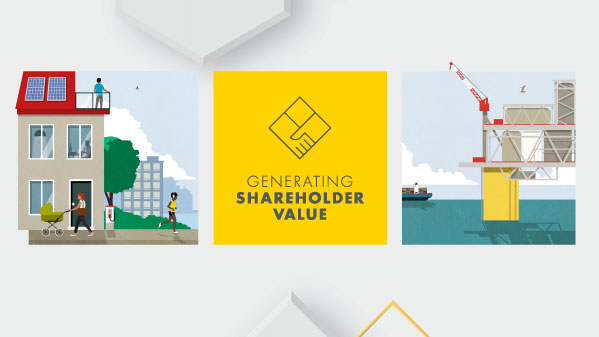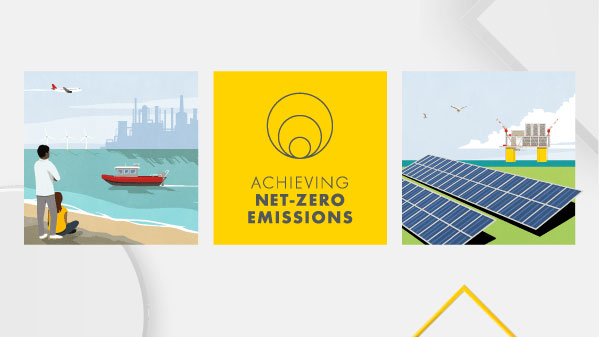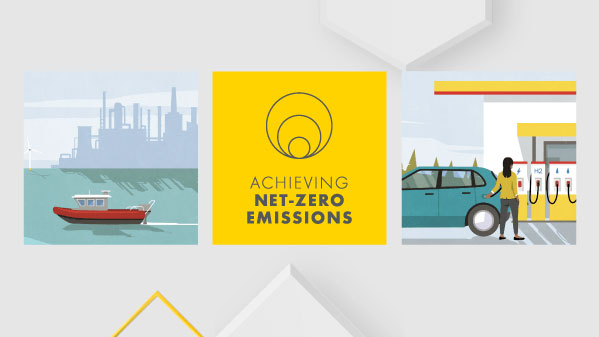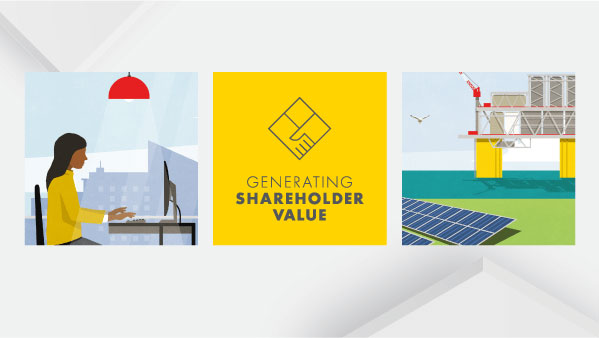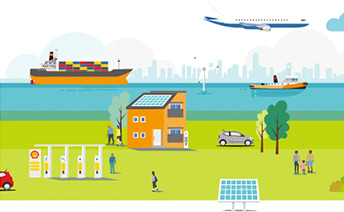Note 5 - Emission schemes and related environmental programmes
Emission trading and related schemes
In general, emission trading schemes (ETS) are mandated governmental schemes to control emission levels and enhance clean energy transition, allowing for the trading of emission certificates. In most ETS, governments set an emission cap for one or more sectors. Generally, entities in scope of the scheme are allowed to buy emission certificates to cover shortages or sell surplus emission certificates. In certain countries emissions are priced through a carbon tax. For Shell, the most significant carbon pricing mechanisms are established in Europe, Canada and Singapore.
Biofuel programmes
Biofuel programmes are mandated governmental schemes that set binding national targets on the share of renewables in fuel consumption or measures on reducing GHG emissions by fuel suppliers. Biofuels are blended with existing fuels such as gasoline and diesel to reduce net emissions. The share of biofuel in the total sales mix of fuel is used to comply with regulatory requirements. This can be achieved by the blending of biofuels in refineries and/or distribution depots (self-blending), through import of biofuels (for jurisdictions that grant biofuels certificates at the point of import) or by the purchasing of certificates from third parties (for jurisdictions that have a tradable biofuel certificates mechanism). Biofuel programmes also include regulatory requirements to pay a levy for the combustion of fossil fuels, based on CO2 emitted – mainly related to the German Fuel Emissions Trading Act (BEHG) applying since January 1, 2021.
Renewable power programmes
Renewable power programmes create a financial incentive to consume power that is sourced from renewable origins or require that a minimum percentage of power sold meets the green definition of the relevant standard. These regulations are typically accompanied by schemes supporting investments in the renewable technology. Renewable power programmes generally use certificates to monitor compliance, where renewable power certificates are granted for each MWh of energy generated that meets the predefined renewable criteria. Shell’s compliance obligation under renewable power programmes comes primarily from energy supply and results from regulations applying in Europe, North America and Australia.
|
|
|
$ million |
||
|---|---|---|---|---|---|
|
2022 |
2021 |
2020 |
||
ETS and related schemes |
493 |
331 |
150 |
||
Biofuels [A] |
2,918 |
2,609 |
1,137 |
||
Renewable power |
594 |
455 |
364 |
||
Total |
4,005 |
3,395 |
1,651 |
||
|
|||||
|
|
|
|
$ million |
||
|---|---|---|---|---|---|---|
|
ETS and related schemes |
Biofuels |
Renewable power |
Total |
||
At January 1, 2022 |
284 |
2,362 |
101 |
2,747 |
||
Additions |
385 |
1,485 |
468 |
2,338 |
||
Settlements |
(256) |
(2,142) |
(398) |
(2,796) |
||
Other movements |
27 |
(104) |
(11) |
(88) |
||
At December 31, 2022 |
440 |
1,601 |
160 |
2,201 |
||
At January 1, 2021 |
157 |
780 |
76 |
1,013 |
||
Additions |
292 |
2,450 |
405 |
3,147 |
||
Settlements |
(115) |
(754) |
(355) |
(1,224) |
||
Other movements |
(50) |
(114) |
(25) |
(189) |
||
At December 31, 2021 |
284 |
2,362 |
101 |
2,747 |
||
|
||||||
|
|
|
|
$ million |
||
|---|---|---|---|---|---|---|
|
ETS and related schemes |
Biofuels |
Renewable power |
Total |
||
At January 1, 2022 |
|
|
|
|
||
Current |
(270) |
(3,262) |
(273) |
(3,805) |
||
Non-current |
– |
(182) |
(29) |
(211) |
||
|
(270) |
(3,444) |
(302) |
(4,016) |
||
Additions |
(1,237) |
(2,916) |
(637) |
(4,790) |
||
Additions covered by government grants |
776 [A] |
|
|
776 |
||
Settlements |
292 |
2,456 |
499 |
3,247 |
||
Other movements |
(19) |
58 |
34 |
73 |
||
|
(188) |
(402) |
(104) |
(694) |
||
|
|
|
|
|
||
At December 31, 2022 |
|
|
|
|
||
Current |
(458) |
(3,424) |
(350) |
(4,232) |
||
Non-current |
– |
(422) |
(56) |
(478) |
||
|
(458) |
(3,846) |
(406) |
(4,710) |
||
At January 1, 2021 |
|
|
|
|
||
Current |
(154) |
(1,549) |
(290) |
(1,993) |
||
Non-current |
– |
(54) |
(6) |
(60) |
||
|
(154) |
(1,603) |
(296) |
(2,053) |
||
Additions |
(781) |
(2,756) |
(487) |
(4,024) |
||
Additions covered by government grants |
456 [A] |
|
|
456 |
||
Settlements |
150 |
755 |
491 |
1,396 |
||
Other movements |
59 |
160 |
(10) |
209 |
||
|
(116) |
(1,841) |
(6) |
(1,963) |
||
|
|
|
|
|
||
At December 31, 2021 |
|
|
|
|
||
Current |
(270) |
(3,262) |
(273) |
(3,805) |
||
Non-current |
– |
(182) |
(29) |
(211) |
||
|
(270) |
(3,444) |
(302) |
(4,016) |
||
|
||||||
Environmental certificates acquired that are held for compliance purposes are recognised at cost under intangible assets. In addition, a portfolio of environmental certificates is held for trading purposes and classified under inventory (see Note 2 and Note 16). Environmental certificates held for trading purposes can be redesignated for compliance purposes and then settle compliance obligations.
Cost recognised in the Consolidated Statement of Income represents the compliance cost associated with emissions or with products sold during the year. The liability at year-end represents the compliance cost recognised over current and past compliance periods to the extent not settled to date. Liabilities are settled in line with compliance periods, which depend on the scheme and may not coincide with the calendar year.
The figures present compliance schemes only, excluding voluntary activities.

